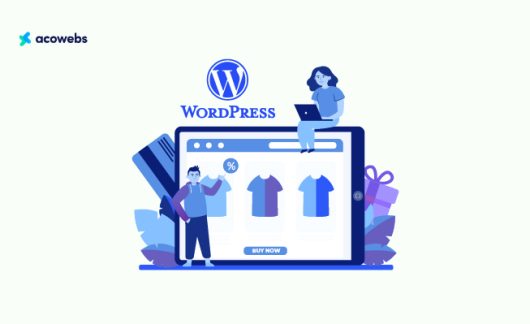Table of Contents
Every eCommerce outlet is seeking the best ways to promote their products and services. Email marketing is still the most effective method for engaging with and converting prospects and existing customers.
This tactic enables you to reach customers easily and conveniently through their mobile devices.
You also gain from collecting important user data, which you can use to evaluate consumer behavior and performance (such as open rates, click-through rates, subscription rates, etc.) and make improvements.
But what makes email marketing such a powerful marketing channel?
A report by Campaign Monitor shows that email is the most lucrative marketing strategy to increase sales because it generates the highest return on investment (ROI) relative to other online marketing channels.
For every $1 you spend on email marketing campaigns, you stand to generate $38 in revenue. The report also shows that email marketing is 40 times more effective at acquiring new clients compared with Facebook and Twitter.
Going by these figures, it is essential to master the art of using email marketing campaigns to make the best out of it. Simply having some email content or sending out emails randomly will not give you the maximum benefits.
In this article, we will discuss the definition of email marketing, its importance, email marketing strategies to increase sales performance for your eCommerce store, and real-life applications of this tactic.
What is Email Marketing?
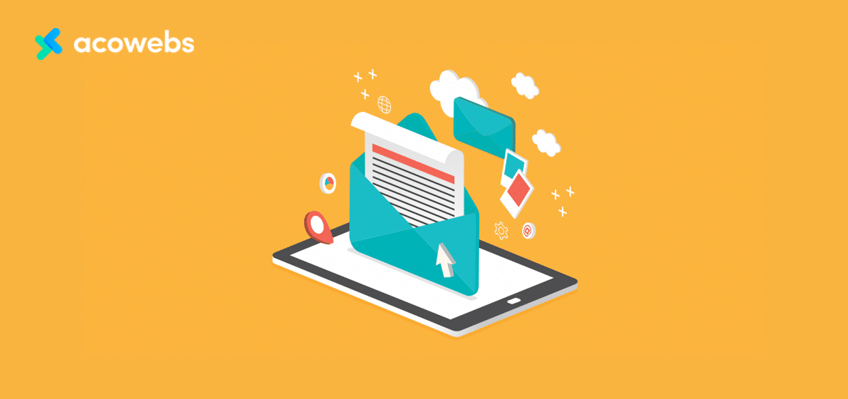
Email marketing entails sending promotional materials to a customer list using email. You can send emails targeting cart abandoners or promote your existing and new products.
Businesses use marketing emails to nurture and encourage customers to learn about the features and benefits of their products and services and make purchase decisions.
You can also use this strategy to welcome new subscribers to your channel or business or ask customers to recommend your offering to friends in exchange for offers and discounts.
Why is Email Marketing Important for Online Businesses?
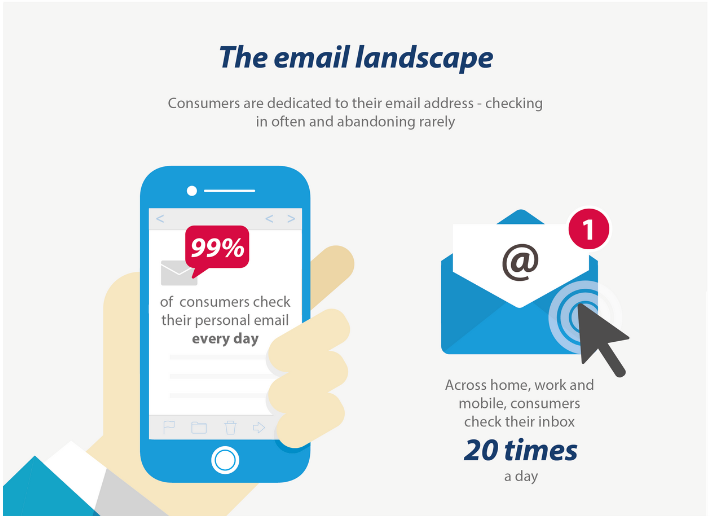
Email marketing enables you to reach customers directly and personally, which is essential if you want the recipients to open the contents and take action.
Many people can now access their emails via smartphones, making it even easier for customers to check on the status of their online store orders or sign-up for your newsletter.
You can also improve engagement and conversions by addressing your customers by first and last names in the salutation or by adding links to abandoned shopping items.
Email marketing also leads to improved lead conversions. As of 2020, email marketing contributes to about 15.11% conversion rate, which businesses measure using variables like the number of clicks, sign-ups, or purchases relative to the number of emails sent.
Emails enable you to easily segment your target clients according to variables like demographics, age, buying patterns, or customer journey.
For instance, you can send email campaigns to cart abandoners, people who purchased recently, or according to recent engagement.
When you refine your email marketing audience, you personalize the content to suit their needs, hence, increased conversions and sales.
Statistics by the Data and Marketing Association show that 99% of customers open their emails daily, and a majority check their inbox 20 times a day.
Mobile phone users account for 46% of these opens, making this channel the leading reading environment. You should leverage this space to target a large audience and improve conversions easily and cost-effectively.
10 Email Marketing Strategies to Increase Sales
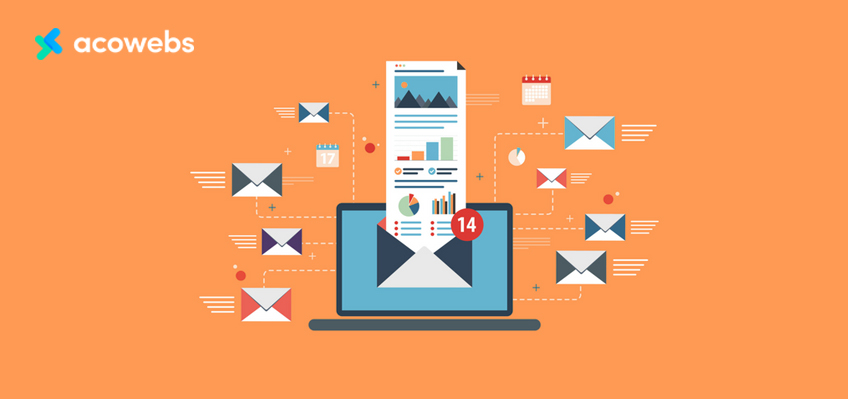
How well you set up your email campaign will determine your success rate in using email marketing campaigns. Let’s have a look at the 10 best practices for using email marketing and real-life applications.
Personalize the Content for Improved Engagement
According to research by Campaign Monitor, 75% of email revenue is generated from personalized marketing campaigns, as opposed to one-size-fits-all tools.
When you personalize your emails, you nurture your existing customers into learning more about relevant products and services, keeping them engaged. It becomes easier to convert them and increase sales because you understand their needs better.
You can personalize your email marketing campaigns by featuring subscriber-relevant content about your products and services. For instance, you can include specific features of items left in the abandoned carts.
You can also use location-specific images and offers to make your emails feel and appear relevant to your target customers.
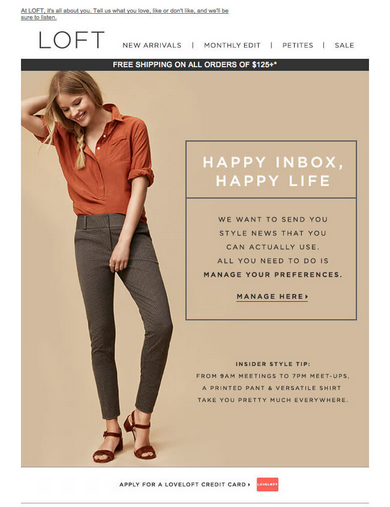
A brand like Loft does it differently by asking their customers to update their preferences to enable the eCommerce retailer to provide a more personalized experience.
This email marketing strategy enables the brand to increase sales because customers feel that their likes, dislikes, and opinions are valued.
Segment your Customers
Segmentation enables you to reach a select group of the intended client base.
For instance, you can segment and target your email marketing campaigns to a group of customers living within a certain geographical location instead of sending messages to the entire subscriber list, some of which may be spread across the country or other regions.
You can use tools like CRM software or Campaign Monitor to segment your target audience for improved engagement, click-through rates, and conversions.
According to HubSpot, email list segmentation can derive impressive results for your online business, including a 39% higher open rate, 14% improved word-of-mouth, and 24% increased sales leads and revenue.
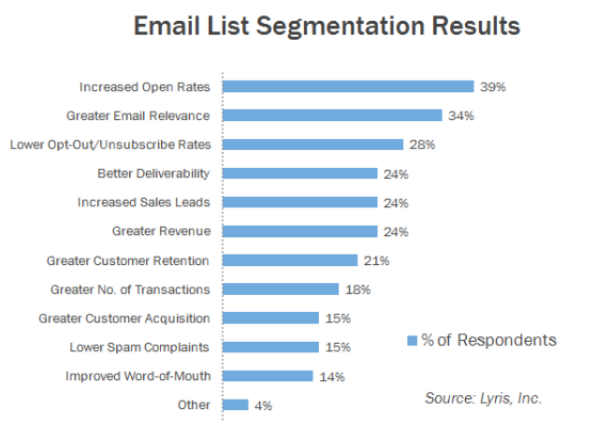
You can start your email segmentation by industry by targeting subscribers offering specific products and services.
You can also segment by company size (account-based segmentation), where you group your email campaign audience according to the size of their business or annual revenues, leading to improved response rates.
Another way of doing this is by sales cycle. For instance, your early-stage buyers will need more research-based content and information than an aggressive sales pitch, while at the end of the cycle customers will be more responsive to free trials and product brochures.
The Campaign Monitor segmentation tool enables you to select the content and the demographic you would like to send and show it to:
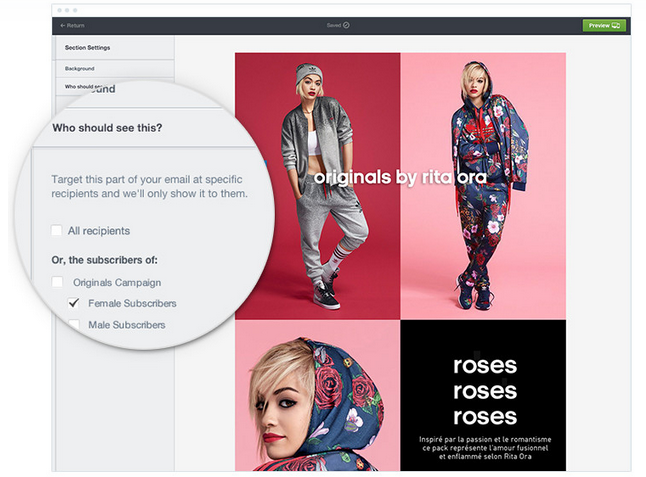
ALSO READ: How To Grow Your WooCommerce Store Email List
Optimize your Emails for Mobile
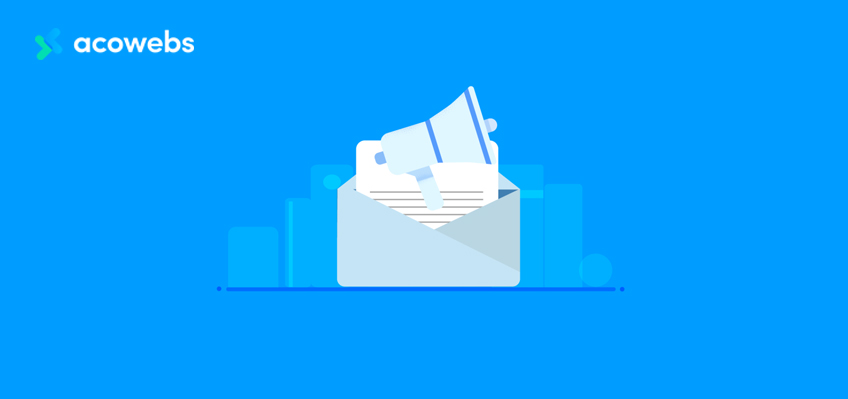
According to a report by Constant Contact, the average email open rate as of September 2020 stood at 17.16% across all industries.
The click-through rate (CTR) was 8.87%. Some industries like health and social services (providers of elder care, health care, and adoption services) had an open rate of 23.52%, while education scored 28.38%.
Open rate refers to the percentage of emails opened relative to those sent, while the click-through rate compares the number of recipients who clicked an email link against the number of opens.
Irrespective of the industry you operate in, you should aim to arrive at the highest open and click-through rate possible.
You can achieve this goal by ensuring your email marketing campaigns are optimized for mobile – the average sales revenue you can gain from mobile emails is 4 times higher than that of a desktop email click.
How do you optimize your emails for mobile?
- By adopting responsive email designs (RED). This solution is usually provided by many email service providers, enabling every user to see highly responsive email marketing campaigns, irrespective of the screen or device. You can also use custom email design tools.
- Use short subject lines and pre-headers (snippet text). This tactic ensures the reader can easily see what the email is about.
- Keep the call-to-action (CTA) big and obvious. Let the CTA be clear and visible with big, bold fonts and a simple click-button.
A brand like HolidayPirates have optimized their email campaigns for mobile, leading to increased conversions and sales:

Trigger Automated Email Campaigns
Automated email campaigns are scheduled according to user behavior.
Most of these emails are triggered to welcome new users or subscribers (onboarding), prompt users to take action (reactivation), appreciate your customers, and to confirm approved or completed transactions or orders.
Trigger emails are sent per event and perform better than traditional emails because their open rates are 95% higher, at 49%.
Their average CTR is more than double that of traditional emails. Indeed, many websites are using them to gain more traffic and increase their sales revenues four-fold.
Event-based trigger emails perform so well because their content is relevant to their recipient.
For instance, automated abandoned cart emails contain details of the items the customer was shopping for, discounts and freebies, and even links directing the site visitor back to the checkout page.
Building this email marketing tool does not have to be challenging. You can easily implement it using auto-responders inbuilt in your customer support tool. You can also use tools like EngageBay or Mailchimp.
EuroStar uses automated emails to send attractive, customer-centric emails upon releasing travel destination tickets:
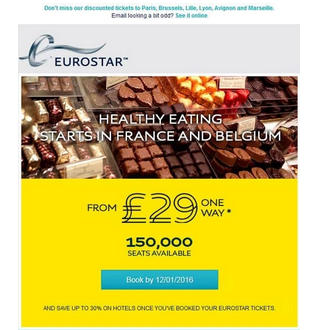
Leverage User-generated Content
User-generated content (UGC) is one of the upcoming email marketing strategies to increase sales effectively. It enables online businesses to increase engagement by allowing customers to interact with the brand while influencing others to buy.
According to Adweek, this cost-effective yet sales-driven tactic can convince up to 85% of customers to buy your products, compared with you showing them photos of your brand.
ALSO READ: 11 Ways to Use Social Proof In eCommerce
What is UGC?
Many digital marketers, as high as 65%, often struggle to create well-designed and engaging visuals. This process is also costly and time-consuming, causing many to shift to using UGC.
UGC is any form of content (images, videos, posts, reviews, etc.) created by consumers on social media platforms.
You can run a UGC email marketing campaign by using a hashtag. You can promote the tag in your emails and encourage customers to use it to post photos of themselves using your products.
You can use the best photos in your future email marketing strategies. You can also feature the best or funniest reviews for your products. Or, you can point out to your email recipients, trending, bestselling, or trending products and services.
This tactic will surely prompt email recipients to take action, especially if you offer discounts for customers who share the best photo. Your brand will gain from increased sales due to improved engagement, clicks, social shares, and conversions.
Madewell and Nisolo use UGC to increase the open and click-through rates for their emails:
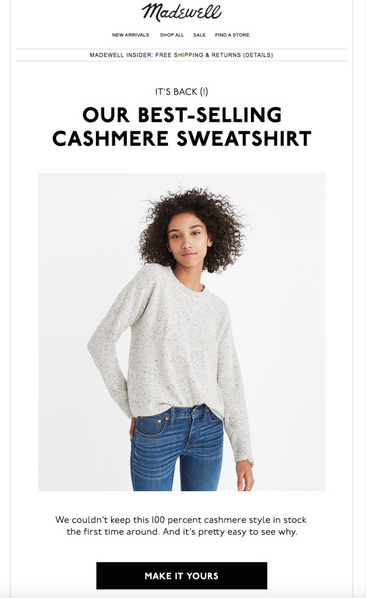

Build your Contact List Using Referrals
Asking your email list recipients to refer your brand or products to their friends and family enables you to tap into an already loyal clientele.
The customers referring your services to others are already aware of your capability and will readily recommend you, leading to increased engagement, shares, and sales.
According to a report by Nielsen, word-of-mouth recommendations from family and friends (earned advertising) are the most influential – they are the most trustworthy.
You can leverage the power of referrals in your email marketing strategy by asking your satisfied customers to refer your brand to their contacts.
The best practice is to insert referral links in the email and award successful referrals with discounts, loyalty points, or other benefits.
The new signups received through the referral links will help expand your contact list, which you can use to send future promotions or sell more products. Remember to always appreciate your referral sources.
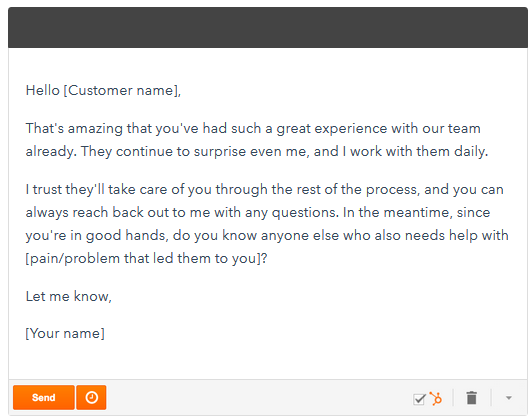

Write Consistently and Professionally
There is no specific standard for the number of times you can send marketing emails. According to research by MarketingSherpa, 15% of customers don’t mind receiving promotional emails from companies at least on a daily basis.
The majority, about 88%, prefer receiving them monthly.

These figures should encourage you to send relevant, impressive email marketing campaigns consistently. You could also ask your audience how often they would prefer to hear from you to enable you to adjust your approach accordingly.
The content of your email marketing pieces should be valuable, insightful, and share-worthy. Ensure to write professionally, add some aspects of personalization, and make the campaigns interesting and story-based.
You can use Campaign Monitor’s copywriting tools to learn more about how to create high-performing marketing emails.
Jaybird Uses those approach by focusing the content of its email marketing campaigns on product benefits and value-adds:
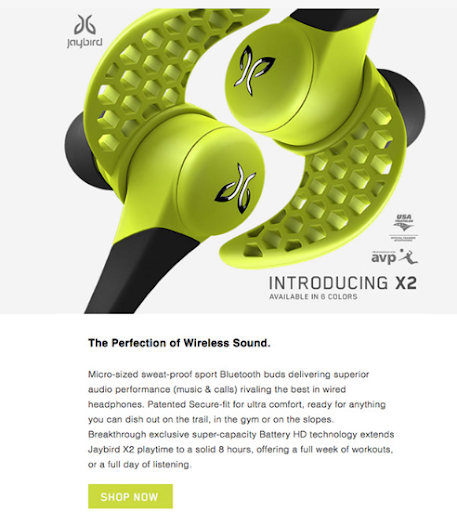
Test your Email Copy, Design, and Buttons
It is essential to measure the performance of your email marketing campaigns by, for instance, testing the email templates, landing pages, or the home page, to enable you to understand if your strategy is working and how to improve.
One of the best tools to use for this purpose is A/B testing. This technique enables marketers to determine what resonates with their audience.
You can use it to gather data on the performance and effectiveness of your email marketing. For instance, you can test your email marketing campaigns’ subject lines, messaging, call-to-action buttons, design, personalization, target audience, sender’s name, and other features.
During Obama’s 2012 Presidential campaign, the campaign management team was able to test multiple email subject lines and the expected amount of donations.
A subject line like “I will be outspent.” which was expected to generate $2.5m in donations ended up generating $2.6m.
When using this email marketing strategy to increase your sales, consider testing other factors like the performance of the source email address (personal vs. company), length of the email content, and plain text versus HTML campaigns.
Plain text emails appear more personalized and can improve your open and click-through rates.
Grammarly’s promotional email for their premium package contains a summarized email copy, clear headline and CTA, and a GIF image to appeal to the target audience:
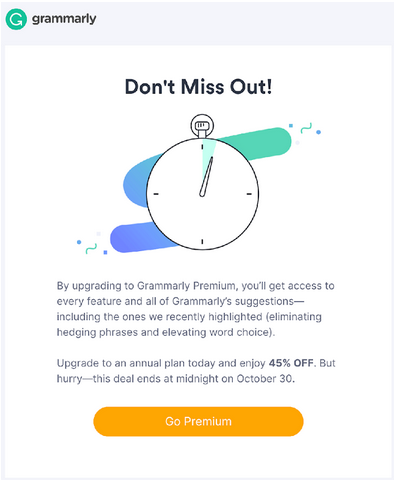
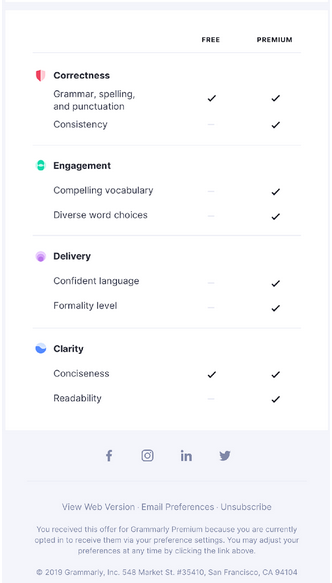
Authenticate your Email Domain
You can improve your email campaign open and delivery rates by ensuring your email address is authentic or valid.
Failure to do this will mean that your emails are being delivered to the spam folder, which can significantly reduce your open and click-through rates and conversions.
Email domain authentication entails identifying the sending domain or origin to enable internet service providers (ISPs) to route your email better.
This practice helps prevent phishing or spoofing in the event an email message appears to be originating from one domain but is actually being sent from another.
A brand like Kinsta had its email marketing newsletters delivered to its clients’ spam folder after the company moved the DNS providers. As a result, the open rate dropped by 4.79%, while the CTR declined by 1.56% over a 1-month period.
One of the best tools to use to validate your domain for emails is MailChimp. This strategy will ensure your marketing emails are sent and delivered to your customer’s inbox, hence, improved engagement and sales.

Create Scannable Email Copies
Aside from ensuring your marketing emails have quality content and designs, your email structure should also come with sufficient white space. Your email campaign recipients are busy people and are also subscribers to newsletters from other companies.
Ensure to incorporate the right visual appeal by keeping the paragraphs short and using bullet points and subheadings where applicable. You should combine these features with the previously discussed elements like short subject lines.
If you are sending a long text or sales pitch, you can include a brief introduction in your marketing email and then add a link to your website where your customers can read and learn more.
Scannable content is easy to read, increasing your reader’s experience and promoting better sales.
You can use tools like MailChimp and ConstantContact to create readable email copies.

Conclusion
Email marketing is the art of sending promotional materials to a customer list using email.
This strategy will enable you to send emails targeting cart abandoners or to promote your existing and new products, reach customers directly and personally, and easily segment your target clients according to factors like geography, demographics, interests, or buyer behavior.
In this article, we have discussed the best email marketing strategies to increase your sales online, including personalizing content about your products and services, segmenting your target audience, ensuring your emails are optimized for mobile, and creating trigger emails.
Leveraging user-generated content will also enable you to gain from social shares while asking your customers for referrals will ensure you have a ready audience for future promotions.
It is also essential to send marketing emails consistently, keep them professional and scannable, and test their features to understand the performance.
Tools like MailChimp will enable you to authenticate your email domain to ensure your emails are delivered successfully, leading to improved open and click-through rates.
Acowebs are developers of Woocommerce dynamic pricing that will help you add bulk discounts to products on your stores. It also developed the plugin for adding various extra product fields which is called Woocommerce product addons, that are lightweight and fast. You can easily update your store with these add-ons and enjoy a hassle-free experience, check out the best options for additional Woocommerce product extra options.











 Login
Login
 Cart
Cart







